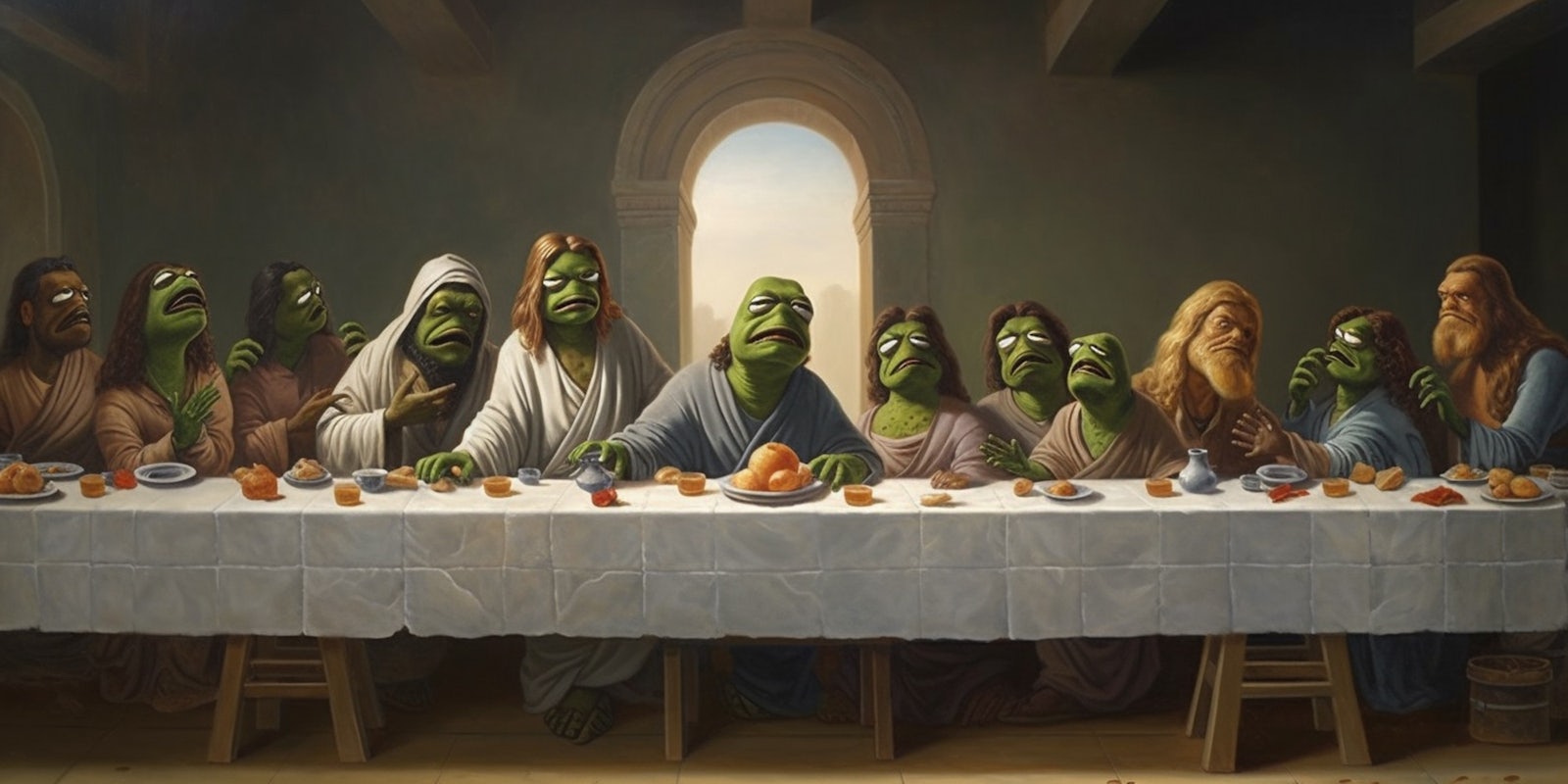Pepe started his life as a laid-back cartoon frog but memes transformed him into an alt-right villain. The evolution of this cultural phenomenon is emblematic of the relationship between online culture and politics. Let’s take a deeper dive into the history of how this frog went from the protagonist of the comic “Boy’s Club,” to an online antagonist.
History
Originally created by Matt Furie in 2005 for the comic “Boy’s Club,” Pepe, an anthropomorphic green frog, began his journey as an innocent cartoon character armed with the catchphrase, “Feels good, man,” that captured the essence of his easy-going nature.
Pepe’s transition into a meme began around 2008, when his image started gaining traction on platforms like MySpace, Gaia Online, and 4chan. Pepe evolved into various iterations, including “Sad Frog,” “Smug Frog,” “Angry Pepe,” and “Feels Frog.” Each variant reflected a different emotional state or reaction, making Pepe a versatile character for online expression.
@sometimestorre #greenscreen do you miss Pepe the frog? #internethistory #memeculture ♬ original sound – Sometimes Torre
By 2015, Pepe had become a staple on sites like 4chan and Tumblr, with “rare Pepes” circulating as virtual trading cards.
@thegregorio Stupid realisation and theory about Pepe the Frog and NFTs
♬ original sound – The Gregorio
However, the character’s widespread popularity took a darker turn when Pepe the Frog was co-opted by the alt-right movement in 2015 and 2016.
@developerfreedom This Is The Exact Moment Pepe The Frog Turned Evil… (PBS Idea Channel) #fyp #fypシ #fypage #foryoupage #foryou #tech #technology #meme #memes #softwareengineer #techjobs #techcareer ♬ Violin – Grooving Gecko
The metamorphosis of Pepe into a symbol of hate and bigotry was alarming and led to its inclusion in the Anti-Defamation League’s hate symbol database. However, it was noted that not all Pepe memes were hate-based. This appropriation of Pepe caused distress to creator Matt Furie, who even took legal action against the misuse of his frog cartoon.
@taranehazar Pepe deep dive from comic to Capitol Siege #pepethefrog #memes #pepe #memeology ♬ original sound – Tara
Pepe the Frog in political and social movements
In 2019, Pepe’s image was again appropriated as a symbol of the protests in Hong Kong. Unlike its use as a representation of hate in the United States, Pepe’s image in Hong Kong was not tied to alt-right ideologies, something Furie openly welcomed.
The reappropriation of Pepe’s image as a symbol of resistance against an oppressive state showed how the meme continued to be usurped by various online communities, constantly shifting the meaning of this anthropomorphic frog.
As Pepe memes proliferated, the character appeared in various contexts, sometimes even devoid of any political connotation. From Katy Perry and Nicki Minaj tweeting Pepe memes, to Donald Trump’s use of a Presidential Pepe, the frog permeated various levels of pop culture and social media. However, some did not consider these newer uses as a full reclamation of the character from its alt-right connotations.
@imzaytri Reply to @tricksterscandy I hope this makes things clearer #twitch #twitchtok #streamer #betterttv #frankerfacez #twitchemotes #pepethefrog ♬ original sound – Zaytri
The legacy and cultural impact of Pepe the Frog
The story of Pepe the Frog is a testament to the ability of the internet to confer new meaning on characters and images. What started as a comic character became a globally recognized meme, a symbol of political movements, and a contentious icon appropriated for hateful causes. But Pepe’s journey highlights the fluid nature of digital symbols and their ability to embody vastly different meanings to different groups of people.
Pepe’s evolution also raises questions about the ownership and transformation of digital content in an age where memes can become powerful tools for communication and expression.
While Pepe’s journey has been tumultuous, it underscores the dynamic nature of internet culture and its impact on society. Pepe remains a potent symbol in the ever-evolving landscape of online expression, embodying the whimsical and controversial aspects of digital communication.


